
In the Northeast, there is hardly a more valuable garden plant than one that blooms in the winter. Add that coveted trait to a plant that is relatively pest-free, has gorgeous fall color, and has branches that are easy to force in midwinter with lovely fragrant blossoms, and you have witch hazels (Hamamelis spp. and cvs., Zones 3–9).
Witch hazels are an ideal small tree or large shrub for Northeast gardens, and there is a size for almost anyone. The showiest selections come from H. × intermedia, which is a cross between two Asian species, Chinese witch hazel (Hamamelis mollis, Zones 5–8) and Japanese witch hazel (H. japonica, Zones 5–8). These hybrid cultivars offer the largest plants, the showiest floral displays, and the widest range of colors. However, H. × intermedia is only reliably hardy through USDA Zone 5, so I would also like to introduce you to an option for those gardening in the colder zones of the Northeast. The North American native species H. vernalis (Zones 3–8) and its many beautiful cultivars offer nearly as wide a color range, but on shrubs that are about half the height of H. × intermedia.
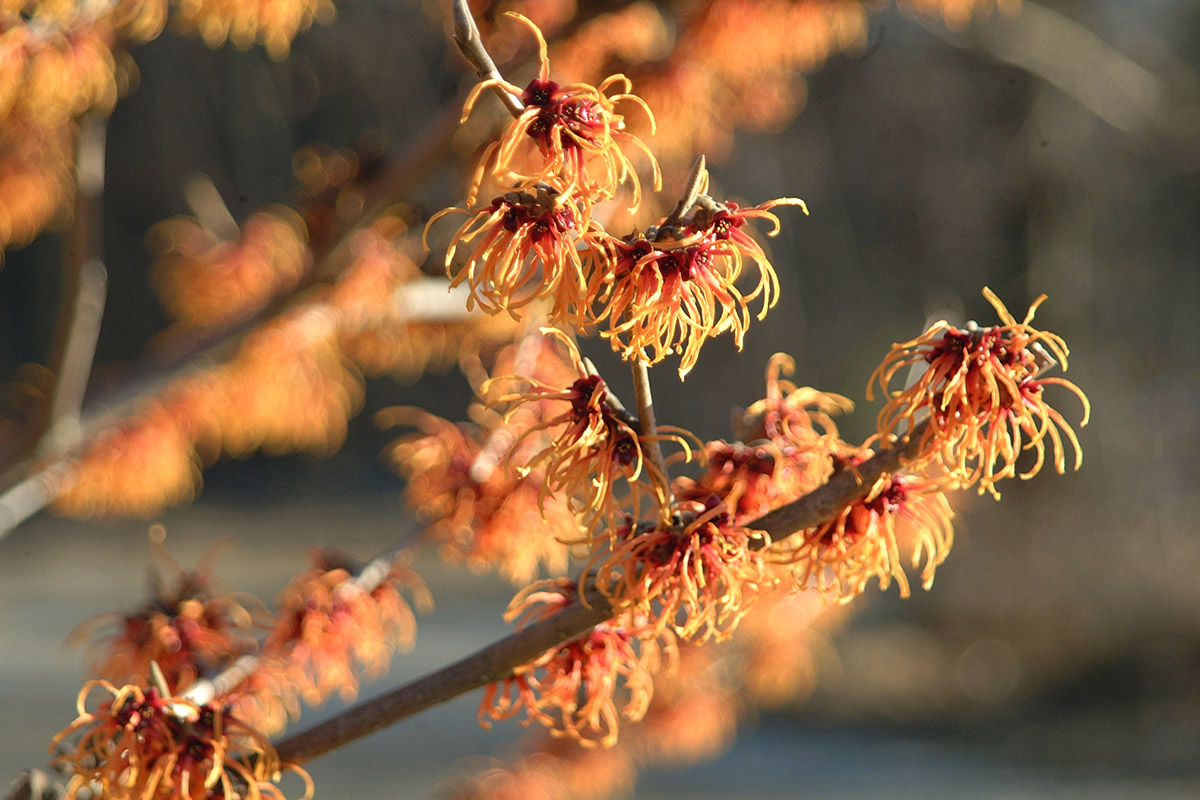
The best cultivars of H. × intermedia
The wide range of colors is what makes gardeners want more than one cultivar of H. × intermedia in our gardens. ‘Arnold Promise’ is a giant of a plant, vigorous, and a heavy bloomer, with distinctly bright yellow flowers. Popular with garden designers, it’s my go-to starter plant for any Zone 5 or above garden. In the background could be ‘Jelena’, with its rich coppery orange flowers, along with ‘Diane’, which has flowers the color of cream of tomato soup.
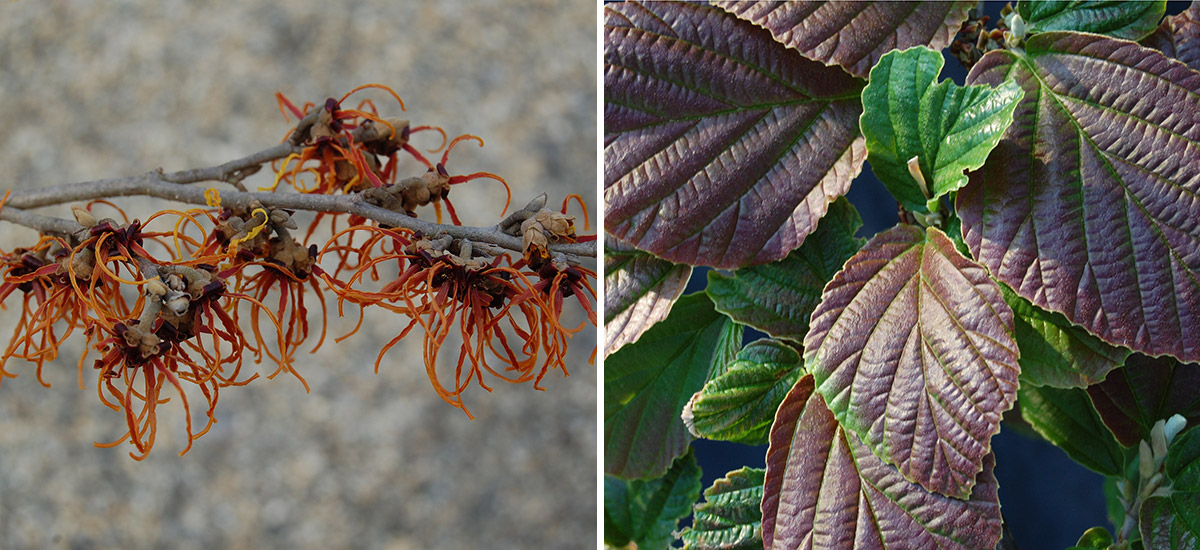
While those are the selections of H. × intermedia more commonly found in the trade, there are dozens of new or lesser-known selections that can be found online, often introduced from breeders in the Netherlands or Japan. Each is often unique and worth seeking out. I particularly like ‘Gingerbread’, with its deep tangerine flowers and spring foliage that starts out purple. ‘Glowing Embers’ is a very special cultivar, with flowers that have a fruit-loopy blend of colors that are golden yellow at the tops of the petals and gradate to a deep merlot at the base of the petals. Last year I added a few more unusual cultivars that have yet to bloom. One has very long, strawberry pink to yellow, bicolored petals; it’s called ‘Spanish Spider’.
A good source for H. × intermedia cultivars is Gossler Farms in Springfield, Oregon, a nursery that carries over 30 cultivars of this cross. Each year I order two or three witch hazels from them to add to my ever-growing collection.

The best cultivars of H. vernalis
H. vernalis tends to have a smaller flower size compared to H. × intermedia, but it makes up for it with a stronger fragrance. H. vernalis is also the species used to distill the astringent available in pharmacies, and like all witch hazels, it blooms quickly even in January when cut branches can be brought indoors to force with little effort.
Keep in mind that H. vernalis plants are on the short side, often barely reaching 6 to 8 feet tall. On the other hand, the color range of H. vernalis cultivars is wider today than it was decades ago. It now extends beyond the pale (yet lovely) yellow of the native species to include bright orange with ‘Orange Surprise’ and even a deep purple with ‘Purpurea’.
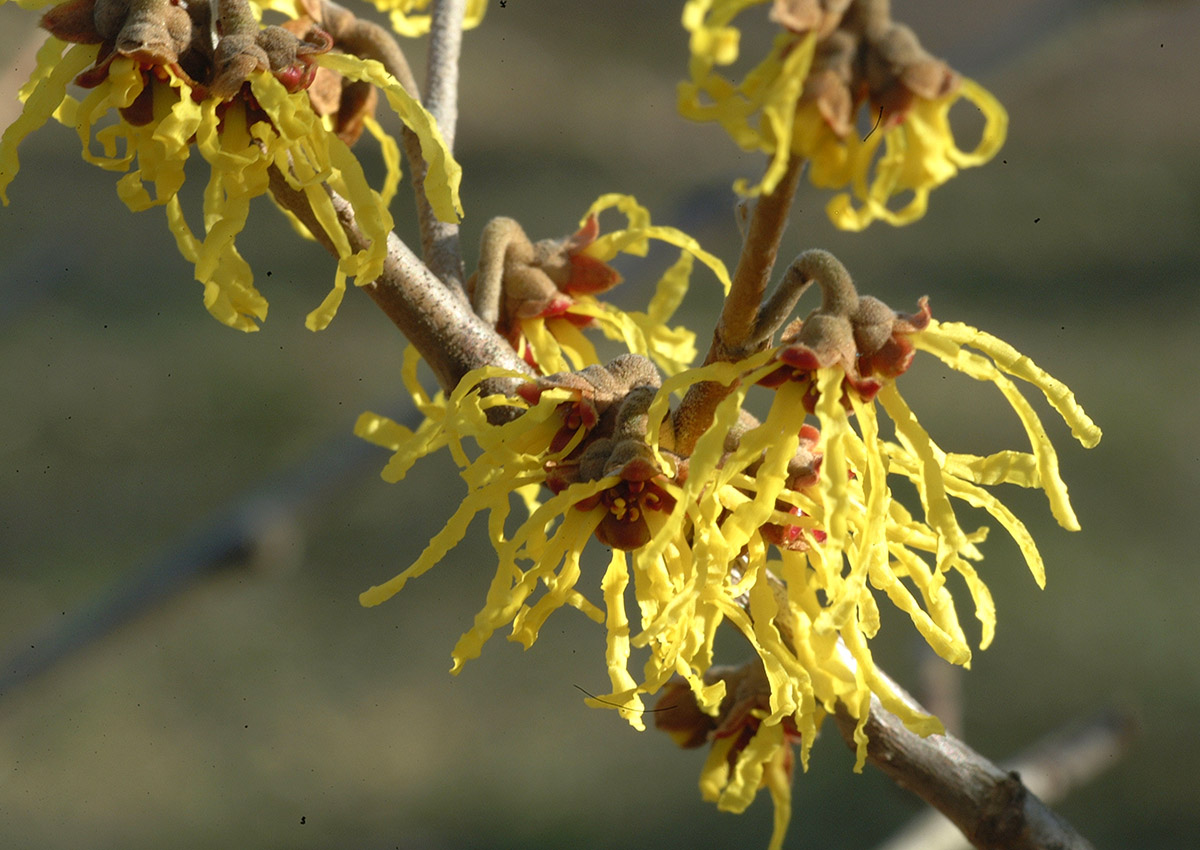
Make sure to give your witch hazel ample room to grow
While witch hazels can be classified as understory trees, perhaps the greatest mistake one can make is to underestimate their ultimate height. ‘Arnold Promise’ can reach 20 feet tall in 10 years. Others, such as the red-flowered ‘Diane’, may only reach 8 feet tall but can spread to over 12 feet wide in as few as 10 years. Other than that, witch hazels are easy to grow. They are adaptable to most soil conditions and most light conditions except for deep shade. Simple annual pruning may be required to establish just a few thick, upright trunks and to remove any suckers. I do this in winter so that I have branches to force inside.

Look further than your local garden center for great specimens
I believe that the reason why witch hazels are uncommon in our gardens is that nurseries know that most shrubs and trees are sold when plants are in bloom, and since these are true winter-blooming plants, they look their best in February or early March. Many Northeast garden centers are closed during this time, and the ones that are open are sparsely visited. Most of us don’t even think to visit our garden centers until spring. A few nurseries that are open will set plants in peak bloom near their doorways on mild days in winter for impulse purchases, but ideally, those who want a nice witch hazel plant may want to inquire ahead at their local nursery or use mail order, which will ensure a wider selection, but often at the cost of a smaller-sized plant than one would get at a nursery.
On my wish list of things to do is what a few innovative garden designers have already done, and that is to plant a rainbow path that features the full spectrum of colors that these fabulous winter-blooming trees are capable of. Depending on the severity of any particular Northeastern winter, one could have blooms starting as early as January that last well into March. Yet with a severely cold winter, many witch hazels wait until March or even April to show their color. Regardless, they are always the first welcome sign of a spring to come.
—Matt Mattus is a lifelong gardener and vice president of the Worcester (Mass.) County Horticultural Society. He’s written two books: Mastering the Art of Flower Gardening and Mastering the Art of Vegetable Gardening.


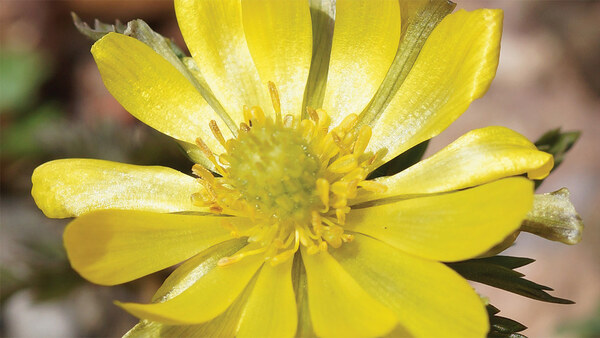
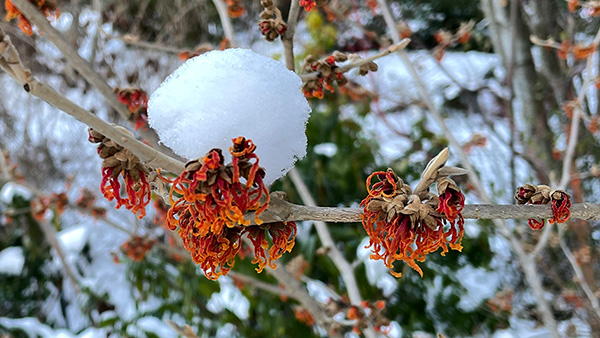














Comments
Log in or create an account to post a comment.
Sign up Log in